When I was approached to transform the bar at Glady’s Caribbean restaurant from a New American concept to an island-themed bar in 2015, I was thrilled to tackle the challenge. I ventured into what was, for me and the New York City bar scene in general, relatively uncharted territory. Still, for all my excitement at the prospect of creating a new concept around a category that was getting little to no attention at the time, I had to admit that I felt, for lack of better terms, lost at sea.
Thankfully, as I tasted through numerous rums to assemble the backbar, I discovered a treasure trove of styles and flavor profiles that could be put to use in all manner of cocktails, from simple to complex. Putting together a fun menu would not be difficult — but finding a way to explain it and sell it might be a different matter.
As I delved deeper into the history of rum cocktails, a theme emerged: Rum, as it turns out, was the go-to spirit of the foundational cocktail templates that entailed the bedrock of American drinks culture. I discovered that rum and its source, sugar, together have the distinction of being one of the world’s first blockbuster commodities, featuring prominently in drinks 200-plus years ago, and still to this day. To my knowledge, no other spirit category can claim this level of influence in the world of cocktails, commerce, and culture.
Back then, I knew I had something special here on my hands. Five or so years later, the selection of rums that I can source and put in cocktails affirms this theory. Following are my take on rum-based drinks that, by virtue of their ease and tastiness, made possible the classic rum drinks that eventually swept the globe — and set the stage for the cocktails we all know and seek out at the bar today.
Classic-Inspired Rum Cocktail Recipes
The Bombo Recipe
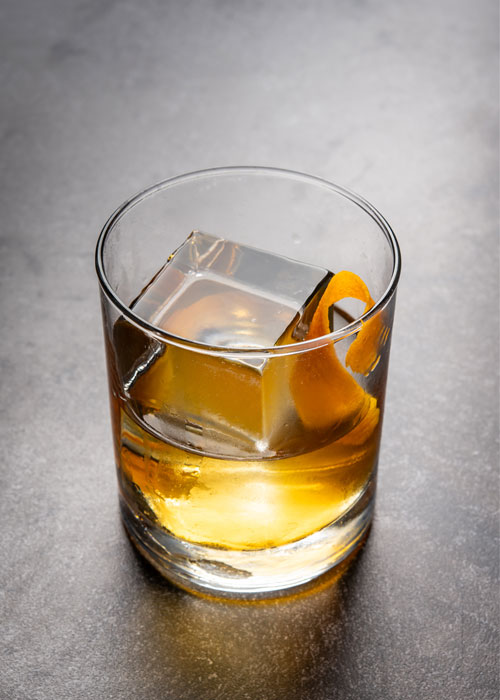
A precursor to the Old Fashioned, the Bombo utilizes fresh grated nutmeg to bring aromatic spice to the picture. It also anticipates the use of bitters — tinctures in which herbs and spices are infused into high-proof neutral grain spirits — to add depth and dimension to a pour of a spirit.
Prior to the creation of this drink, spirits were typically consumed neat, and in rare cases, with a lump of sugar and ice to temper and mellow them. In the Bombo, we witnessed the first step toward the creation of a “true” cocktail.
Ingredients:
2 ounces 5-Year-Old Barbados Rum, such as Mount Gay Black Barrel
½ ounce rich simple syrup (2:1 Demerara sugar and water, simmered for 15 minutes)
Fresh grated nutmeg
Directions:
1. In a chilled rocks glass, combine the syrup and the rum.
2. Add a large ice cube, then stir to chill.
3. Garnish with fresh grated nutmeg, then serve.
Barbadian Rum Punch Recipe
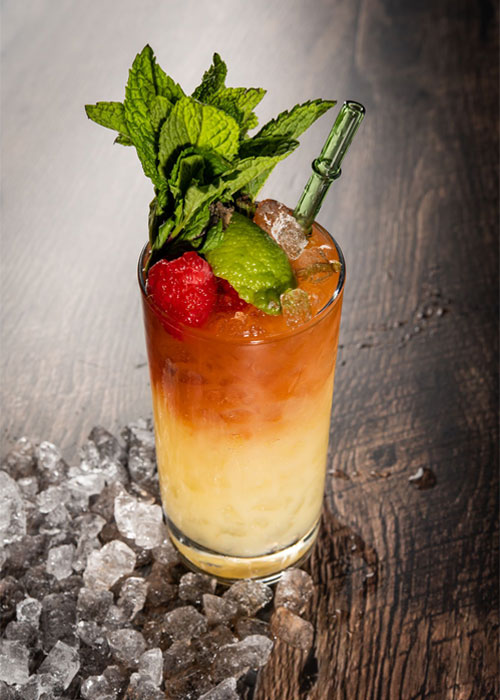
This punch was among the most popular libations in the American colonies, and with good reason: A mixture of bold rum, sugar, citrus, and tea, colonial-era punches are easy to prepare ahead of time and can be scaled up to big batches. Additionally, these libations offered drinkers a taste of the exotic via the inclusion of imported citrus and fragrant teas. While one can easily make a solid punch with four ingredients, this style of drink welcomes elaboration, and the use of as many as a dozen elements, if your wallet and patience can handle to build such a concoction.
Finally, it bears mentioning that punch was essential to the American political process, and deserves the same acclaim as pie: In the early days of our nation, it was not uncommon for those seeking public office to drink it at their speeches, rallies, and all the way to the ballot box. It proved to be an effective means to entertain — and persuade — voters. (This tactic was so successful that some historians credit rum punch as key to George Washington’s ability to win the presidency.) While I am certain that his oratory and policies were convincing in their own right, I don’t doubt that the hospitality he demonstrated by sharing his private stock of Barbadian rum, which was highly prized and preferred over high-end whiskeys, sent a strong message that he had the people’s backs.
Ingredients (serves 4-6):
375 milliliters Barbados Rum, such as Mount Gay Ecliipse
200 milliliters sugar syrup
150 milliliters fresh pressed lime juice
1 liter water
8 dashes Angostura bitters
Lime or orange wedges
Freshly grated nutmeg
Directions:
1. Combine all ingredients in a non-reactive container, stir to mix.
2. Chill for 4-6 hours minimum; 24 hours is best.
3. To serve, pour over ice in a chilled Collins glass.
4. Garnish with lime wedge and fresh grated nutmeg.
Cobbler and Julep Recipes
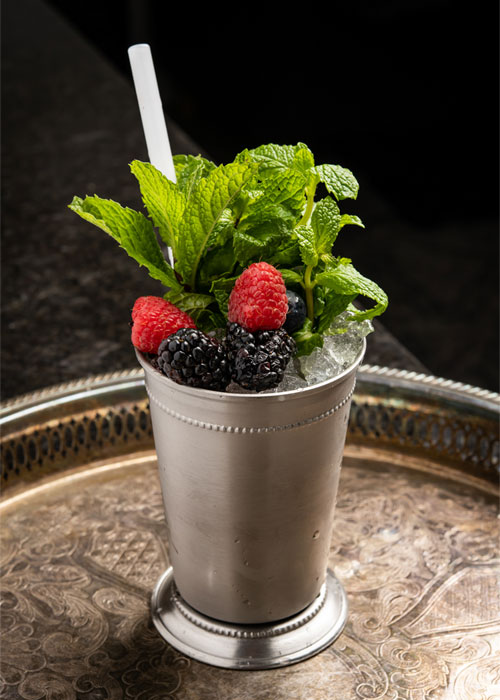
Easy to make, easier to drink, and eye-catching to boot, the Cobbler and the Julep were among the first concoctions to establish a distinctly American approach to making and enjoying cocktails.
First popularized in the taverns and entertainment palaces of 1830s New York, Cobblers and Juleps were also the first cocktails to cross over into the “fancy drink” category and were prepared not only to be delicious, but a feast for the eyes. Served on pellet ice and festooned with copious amounts of mint and fresh fruits, both cocktails were showpieces for any bar that wanted to show off its drink-making prowess with a touch of flash. The experience of drinking a Cobbler or a Julep — which were the drinks de rigeur at bars attached to nightclubs, theaters, or race tracks where today’s equivalent of the leisure set gathered — was intended to be a form of entertainment in and of itself.
While it is more common today for Cobblers and Juleps to be prepared with sherry and bourbon, respectively, rum was still a popular choice when these cocktails were initially introduced. These drinks, also the first to be served with a straw, caused such a stir that they received mention in international press — another cocktail first. The Julep attracted such a cult of devotees that when a friend shared a recipe with another, it was often in the form of a long, affectionate letter. As a Southern girl, this is a sentiment and approach that I can wholeheartedly get behind.
Ingredients:
2 ounces aged Barbados rum, such as Mount Gay Eclipse
1 ounce rich simple syrup
½ ounce lime juice
Mint
Berries and seasonal fruit, for garnish
Directions:
1. In a chilled Collins glass or Julep tin, combine mint and syrup, then muddle.
2. Add lime juice and ¾ ounce rum.
3. Fill the vessel halfway full with ice, then stir to chill.
4. Add remaining spirits and more ice; stir to chill.
5. Garnish for a Julep: a fistfull (go big here) of fresh mint, optionally dipped in edible gold flakes or confectioners’ sugar.
For a Cobbler: same as above, with the addition of an orange flag and seasonal fruits (typically berries).
El Presidente Recipe
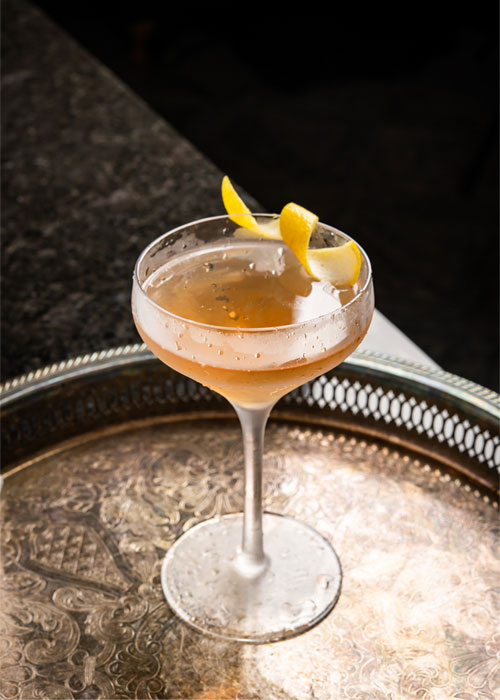
El Presidente has recently begun to reemerge from decades of relative obscurity, with good reason: When done right, it is a dry and elegant riff on the Martini, stirred and served up, enhanced by subtle tropical flavors that appeal to those who enjoy a quirkier take on a spirit- forward drink. It was a favorite in expat bars of the 1920s and 1930s, and is on the verge of making a comeback in the modern bar.
Until recently, the recipe for the cocktail, which looks delicious on paper, would typically yield disappointing results for bartenders. Try as I might (and believe me, I tried, and tried, and tried), I could not pin down a rendition that I felt happy with. I chalked it up to what bartenders typically encounter when attempting to replicate a Prohibition-era cocktail: Either one or more of the ingredients is no longer in production or has significantly changed; or our collective American palate has changed, and the drink has lost its appeal. (Take a few minutes to skim a cookbook from 200 or even 50 years ago, and you will see what I mean.)
Happily, the problem lay with the former option, an ingredient. Last year, Haus Alpenz released a revival of a Vermouth de Chambery called Comoz. With a pale straw hue, it will appeal to aperitif aficionados who enjoy products like Lillet. Most importantly, it has a drier finish than the dry and blanc vermouths I had attempted to work with before to no avail.
With the vermouth mystery solved, the gates to recreating a pristine El Presidente are flung wide open. Even better, the options for white Cuban-style rums available on the global market have dramatically improved. Now, in addition to the usual suspects like Bacardi and Flor de Cana, one can get their hands on Ron Marti, Probitas, or Diplomatico Planas — the latter is my favorite due to its slightly elevated ABV and full, creamy texture.
Ingredients:
2 ounces Cuban-style aged white rum, such as Diplomatico Planas
¾ ounce Orange Curacao
¾ ounce dry vermouth, such as Comoz Vermouth de Chambéry Blanc
1 bar spoon Grenadine (1:1 pomegranate juice and white sugar, simmered for 10-15 minutes)
Directions:
1. Combine all ingredients in a mixing glass
2. Add ice to mixing glass, then stir to chill.
3. Fine-strain into a chilled coupe, then serve.
Optional garnish: lime wheel.
La Floridita Daiquiri Recipe
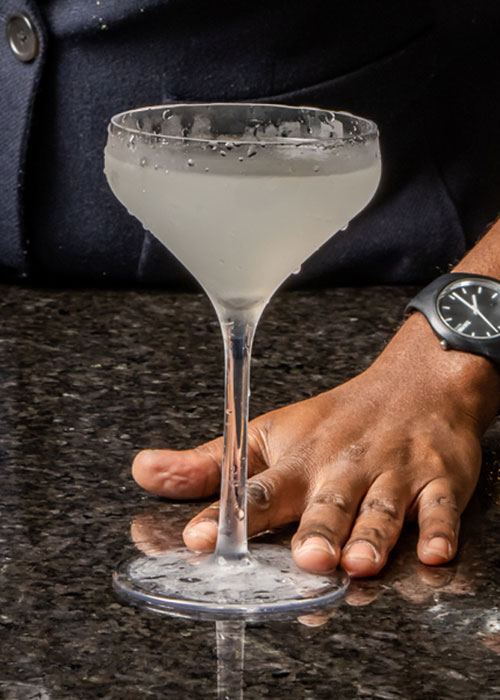
No conversation about rum cocktails is complete without a mention of what I consider to be one of the most essential cocktails of all time. It’s a simple cocktail, consisting of rum, sugar, and lime — nothing too exciting here, until you take the best-quality examples of each of these ingredients and assemble them with care, skill, and finesse.
In the right hands, a Daiquiri is a thing of beauty: It’s bright, crisp, and refreshing. If there is any cocktail that I would designate as the one “to have and to hold,” it would be this one, hands down. Made famous by Bar La Floridita and one of its most loyal patrons, Ernest Hemingway, the Daiquiri is the best introduction to the rum category, and a must-have for anyone looking for ways to evaluate how well a spirit will perform in a more complex drink.
Ingredients:
2 ounce aged white rum, such as Denizen Aged White or Diplomatico Planas
2 generous barspoons white sugar
¾ ounce fresh pressed lime juice
Directions
1. Combine lime juice and sugar in a shaker tin; stir to dissolve, about 30 seconds.
2. Add rum and ice; shake to chill.
3. Double-strain into a chilled coupe, then serve.
Optional garnish: lime wheel.
*Glady’s Caribbean restaurant permanently closed due to financial stresses of Covid-19 on Sunday, June 28, 2020.
This story is a part of VP Pro, our free platform and newsletter for drinks industry professionals, covering wine, beer, liquor, and beyond. Sign up for VP Pro now!
